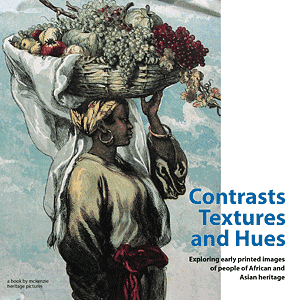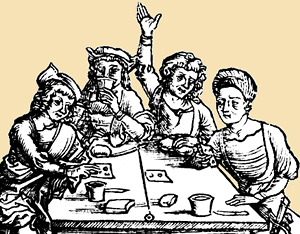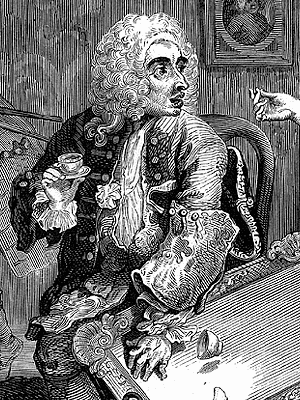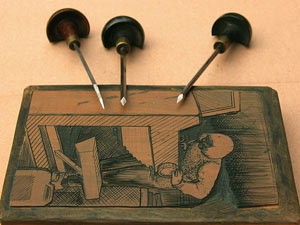A brief history of the printed image, part one
An Appendix written by Conrad Taylor
to the Mckenzie Heritage Picture Archive book
Contrasts, Textures and Hues,
edited by Anita Jeni Mckenzie.
Conrad also contributed to the same book, a section about the rise of lithography.
(Reference links are to Wikipedia entries.)
THE EARLIEST HUMANS were aware of the phenomenon of the repeated image, from their own footprints and those of the animals they hunted, or patterns pressed into clay pots with a stick or reed. But the multiple reproduction of images we call printing came much later in human history.
The multiplied image
The history of printing does not start, as many assume, in Europe in the 15th century. It was invented in the Far East about 1600 years ago, probably in China, following the invention of paper some 400 years before that.

Cover of the book ‘Contrasts, Textures and Hues’ edited by Anita Jeni McKenzie. Conrad scanned and processed images from the Mckenzie Heritage Picture Archive; designed & produced the book; and contributed some articles about printmaking methods — including the Appendix on print history, part of the text of which is reproduced here.
Originally the Chinese wrote on slats of bamboo, or silk cloth. Then they found that if they mashed fibres from the bark of mulberry trees into a slurry with water, they could catch the fibres on a mesh screen, producing a fine white felted material which had a regular surface, and absorbed ink well. This was paper — virtually as we know it today.
Some think that the discovery of printing was hastened by Mahayana Buddhism, which recommends repetitious merit-making acts such as chanting or writing out prayers. From the 2nd century, visitors to Chinese temples were making rubbings onto paper from sacred texts carved in relief on temple pillars. Later, printing from carved woodblocks, a technique already used for adding patterns to textiles, was adapted to print Chinese characters and images onto the new medium of paper.
The earliest printed pieces to have survived the centuries are sheets of Buddhist charms, in the Sanskrit language but in Chinese characters, printed in Japan around 770 on the orders of the Empress Shotoku. The earliest printed book we know of is the Vajracchedika, or Diamond Sutra, printed by Wang Chieh in China in 868: seven sheets of paper pasted end to end to make a scroll 5.3 metres long, six printed with the text of the Sutra, and the seventh a detailed woodcut showing the Boddhisatva Sakyamuni enthroned and surrounded by monks and divinities. (A copy of the Diamond Sutra is in the British Library.)
Starting in 932, a collection of Chinese literary classics was printed in 130 volumes, on the order of the imperial Chinese minister, Fong Tao.
Carving woodblocks
To prepare originals for these early printed works, planks of fine-grained wood were given a polished surface. The image was then cut as a mirror-image on the plank, using knives and chisels. Areas to remain white were cut away; the flat raised parts of the plank left behind were what would print on the paper. The same technique was used to create both pictures and text.
To print from the blocks onto paper, an ink containing carbon and resin was coated onto the surface; a sheet of paper was placed on top, and rubbed down carefully to ensure that the image was transferred to it. The Chinese did not have ‘printing presses’, and their ancient printing was on one side only.
Paper and print come West
When Arab armies defeated Chinese forces at the Battle of the Talas River near Samarkand in 757, paper-making craftsmen were among their captives.

The first items to be reproduced in Europe by printing from woodblocks were playing cards and papal indulgences! These card-players are presumably at the lower end of the moral scale…
A paper factory was established in Baghdad in 784, and the innovation spread throughout the Islamic world: first to Egypt, Sicily and Morocco, and then to Islamic Andalusia in southern Spain, where Jativa became the first European centre for paper production in 1151. Papermaking came to Italy after 1275, and by the 14th century paper-making reached France and Germany.
The Romans and Greeks had used Egyptian papyrus as a writing material; mediæval European scribes wrote on parchment, made of the skins of sheep and goats. Paper was not only cheaper than either parchment or papyrus, but also more uniform in thickness and more absorbent; and these properties made it easier to print on.
Woodblock-printing also arrived in Europe from the Far East in the late Middle Ages. As in China, religious pictures and devotional texts carved into the block were common early subjects for woodcut printing.
Woodblocks were also used for printing playing cards. Card games had been invented in China and Central Asia, and early versions of the deck of playing cards we know today came to Europe from the Islamic world some time before 1370. Early hand-painted cards were too expensive for all but the rich to afford. So woodblock-printed cards are an interesting early example of how mass production techniques made a luxury item affordable to a broader market — such as apprentices and soldiers.
Woodblock printing and metal type
In the 15th century, Johannes Gutenberg revolutionised printing in two ways. His first innovation was the press, a modification of the device used for pressing grapes and olives for wine and oil. He also created sets of movable types — stamps of individual letters — so text pages could be assembled and printed, then pulled apart so the types could be used again and again — letterpress printing.
Gutenberg’s revolution spread throughout Europe and coincided with a rise of literacy among the merchants and craftspeople of the day. Books, previously the monopoly of the religious orders and aristocracy, could now be printed in volume and bought by ordinary people. Of course, these customers appreciated illustrations in their books too.
Fortunately, woodcut illustration was very compatible with letterpress book printing. If the wood-blocks were made to match the height of the metal types exactly, the pictures and text could be mixed on the same page and printed together.
But woodcut printing faced two technical limitations. The limited printing pressures that could be applied from a wooden-framed press dictated an illustration style with more white space than black ink; this also limited the total possible printing area. Furthermore, image lines could not be made too thin, or they would break, so there was a limit to the detail that a woodcut illustration could contain.
The intaglio (engraved) technique
Also during the 15th century, anonymous Rhine Valley and north Italian goldsmiths evolved intaglio printing, which stores ink in thin lines carved into the surface of a metal plate, not on the surface itself as with woodcuts.

William Hogarth was a canny businessman who sold engraved editions copied from his satirical paintings. Enraged by the way bootleggers in turn made copies of his prints, Hogarth took a lead in pressing Parliament for copyright legislation.
Engraving tools were already being used to carve decorative images onto suits of armour, pistols, silverware and other luxury goods. Turning this into a method of printing was a relatively simple step. The technique may have even been suggested by the craft of niello, in which engraved marks are filled with a black alloy of silver, copper, lead and sulphur to make them more visible.
To print from an engraved plate, the surface is smeared with ink and then cleaned, leaving ink only in the grooves and pits which have been carved into it. Paper is laid on the plate, and a great deal of pressure applied. This pulls the ink from the grooves and onto the surface of the paper. Thus engraving is naturally a black-line technique: the cuts made by the engraver’s tools translate directly into black marks on the paper, whereas with woodcuts the cutting process produces the white areas.
Early practitioners of engraving were artist-craftsmen with a background in goldsmithing. One such early Italian example is Antonio Pollaiulo whose warlike print Battle of the Nudes was engraved in about 1465.
To print from an engraved plate requires more pressure than Gutenberg’s press could supply; but the flatness of the plate allows rolling pressure to be applied progressively from one side of the plate to the other. Engravings were printed on a press that squeezed paper and plate together between two hard rollers — rather like a clothes mangle.
Engraving was much used for reproductions of popular artistic works for sale; some commercially astute artists produced their own engraved editions. Rubens set up a workshop under his direct management to produce engraved editions of his paintings for sale, and William Hogarth’s satirical sequences of paintings were also produced by him as engraved editions.
Etching: using acid to bite the plate
Etching is like engraving, but it extends the action of the cutting tools by using an acid solution to cut into the plate. The plate, generally of copper, is coated with a protective ‘ground’ — an acid-proof coating made of oils and varnishes combined with beeswax. The artist scratches through this coating with needles to expose the metal beneath. This allows an expressive and free style of sketching.
The plate is placed in acid to etch it: for copper plates, the traditional ‘Dutch mordant’ is a dilute solution of hydrochloric acid with potassium chlorate; for zinc plates, nitric acid is used instead. The deeper the etching, the more ink can be carried, and the density of the impression in each part of the plate can be controlled by blocking areas with a ‘stop-out varnish’ to protect them against further etching, then continuing the acid treatment.
Mezzotint, the ‘black manner’ of printing
Another technique related to engraving was mezzotint, introduced in the 17th century. The diarist John Evelyn credited Prince Rupert with the invention of the technique, which involves using a toothed steel rocker to cover the surface of a copper plate with tiny indented perforations which will hold ink, then burnishing the plate to close up the indentations in places where lighter tones are required.
The French called mezzotint le manier noire — the ‘black manner’ of printmaking: it excelled in subtle dark tones. Perhaps because the technique was shown to best advantage when portraying dark skin, some early experimenters in mezzotint portraiture used African subjects. The British Museum has two mezzotint portraits of an African boy created by Sir Christopher Wren, better known as the architect of St. Paul’s Cathedral.
From woodcut to wood-engraving
At the end of the 18th century, what was needed was a method of printing illustrations that had a precision and subtlety approaching that of engraving on metal plates, but which could be integrated into the same page as type matter. That, above all, was what both magazine and newspaper proprietors and advertisers were looking for.

A block of boxwood, and three of the wood engraving burins used by Conrad to engrave it. Woodblocks for engraving are traditionally machined to the same height as metal letterpress type.
The development of wood engraving is credited to the Northumbrian artist and naturalist, Thomas Bewick (1753–1828). Bewick was a precocious Northumberland country boy apprenticed to a metal engraver, from whom he learned to translate sketches and watercolours of the world of nature into marks made with a graver’s burin.
Bewick had blocks of hardwood prepared so that the printing surface was formed from the end-grain, with the wood fibres perpendicular to the surface. When you cut on the end-grain of hard woods like pear, cherry or boxwood, the grain does not interfere with the direction of your cut, and because the wood fibres run down into the body of the block, fine lines can be cut without any risk of them breaking off under printing pressure. (One of Bewick’s own woodblocks survived over a million impressions.)
Bewick developed his technique at a time when paper had become finer and more predictable in quality. This meant it was unnecessary to cut deep into the woodblock to make a white line: a shallow cut would do just as well, and gave the block greater strength.
Not only could wood-engraving deliver more precise line detail and subtlety in illustrations — comparable to the detail previously available only from metal engraving — it also changed the way in which ink delivered visual meaning on the printed page. Whereas the inked image from a woodcut was primarily an outline, the parallel fine strokes of the engraver’s burin could now use pattern to show shading and tone, and even texture. Bewick used this to great effect in his published illustrated volumes on birds and four-footed creatures, rendering their feathers and fur (e.g. A General History of Quadrupeds in 1790, and his books on British birds in 1797 and 1804).
Bewick’s curiosity about natural history extended to the creatures then being encountered by early British explorers and settlers in Africa, Asia and Australia: one of his engravings shows an antelope in an imagined landscape — with a tiny image of a distant native hunter in the background.
The great paper chase
There could be no significant growth in the volume of printing without a corresponding increase in the supply of paper. Before 1800, all paper was made one sheet at a time, by hand. The first machine capable of extruding a continuous roll of paper on a wire-mesh conveyor belt was built in Hertfordshire in 1804 by the stationers Henry and Sealy Fourdrinier. Some thirty years later, it could be claimed that a Fourdrinier machine could make as much paper in a minute as had previously taken a week to make by hand.
Another serious problem was the growing shortage and high cost of textile rags, the traditional raw material of the paper industry. In 1857, Thomas Routledge began to use esparto grass at his Oxfordshire paper-mills, and ground-up wood pulp also began to be used in the same decade. In the 1870s a new chemical process was introduced that allowed a finer, longer-lasting paper to be made by treating wood-pulp in a high-temperature, high-pressure boiler with sulphur compounds. Paper manufacture increased hugely, and the price fell, throughout the 19th century.
Gearing up to mass image production
Production bottlenecks also threatened, as popular newspapers and magazines vastly increased in circulation (the Christmas 1882 edition of the Illustrated London News claimed 425,000 impressions). Steam-powered equipment such as Koenig’s pioneering cylinder presses installed at The Times in 1814 provided part of the answer.
Another key development was the invention in the 1820s of the ‘stereotype’. Once a page of type and image blocks was assembled, a mould was made from it using plaster of Paris, and from this could be cast a number of exact duplicates, so a room full of presses could work in parallel to duplicate the page.
(This is the origin of our metaphorical use of ‘stereotype’ to mean an unexamined opinion, and we give a similar use to the French word for the same technology — cliché.)
Photography helps, then replaces the engraver
In the late nineteenth century, photographic processes began to affect printing. In 1860 Thomas Bolton devised a method of contact-printing from a photographic negative onto a whitened woodblock coated with a silver nitrate solution. Fixed with thiosulphate, this gave the engraver an exact reference for what parts of the block to cut away.
From the 1880s onwards, ‘process engraving’ began to replace the role of those engravers whose job had been simply to translate artists’ drawings into printable blocks. Zinc plates, coated with a light-sensitive emulsion, were contact-printed from photographic negatives made from the original drawings. After the emulsion was developed, the plate was etched in nitric acid, and the non-printing areas corroded back. By nailing the plate to a block to raise it to the same height as type matter, it could be used directly in printing, or a stereotype cast from it.
Process engraving gave the pen-and-ink illustrator direct control over the printing surface. It also meant an artist could produce a more detailed illustration by drawing at a larger scale than the final print would appear: the scaling could be done when the photographic negative was shot.
This photo-chemical method for making artists’ drawings printable was later elaborated into a method to allow photographs themselves to be reproduced using zinc half-tone blocks — but the role of photography in print lies outside the scope of this publication.
Suggested further reading
David M Sander, Wood Engraving, an adventure in printmaking. 1979. Peter Owen, London.
Michael Twyman, Printing 1770—1970, an illustrated history of its development and uses in England. 1970, Eyre & Spottiswoode, London.
(The Encyclopedia Britannica also has several informative articles under the headings of Printing and Printmaking, and the names of the individual processes described here.)

